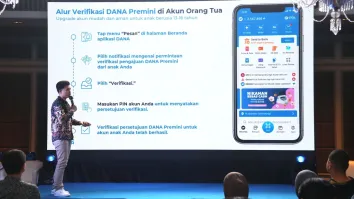Digital financial services in Japan: What digital consumers want
By Eiichiro YanagawaDigital innovation initiatives are gathering speed at financial institutions around the world. This was made further evident by the Celent Model Bank awards announced in April 2019. The awards recognized 22 projects from 30 countries, and all were initiatives that feature digital elements and innovation.
At the same time, developments in financial services continue to be highly regional and are highly dependent on the profiles and preferences of service users. In particular, in the retail world, seeking a global standard in financial services is largely meaningless. Rather, discovering coverage gaps between regions is often a means of discovering opportunities for significant innovation and blue ocean areas of an unexplored market.
Celent surveyed a thousand Japanese consumers to take stock of the current state of digital consumer trends in Japan and to shed light on innovation-related opportunities.
Our key findings are grouped accoding to digital behavior generally and interactions with banks specifically.
Digital Consumer Profile
Japanese consumers make great use of email and voice calls, and about half of the respondents said they engage in text communication daily. About 40% of respondents engaged in communication via social networking services (SNS), while just shy of 20% used apps to remit personal funds and for video communication.
Overall these figures indicated usage rates exceeding expectations. In short, consumer digital behavior has advanced by leaps and bounds.
At the same time, the digital financial behavior of Japanese consumers remains largely unchanged. In terms of age, it is worth noting the mobile usage rates (40% for banking) among individuals in their 30s to 40s, but the overall scope of digital financial behavior was much lower than anticipated.
Respondents’ degree of digital financial service use rose almost in proportion with increases in income level. The use of digital financial services was primarily concentrated among the highest-income consumers (annual income over 16.5 million yen) and upper-middle-income consumers (11 million to 16.5 million yen), with these groups indicating substantially higher rates of use than lower-income consumers.

Most Japanese consumers prefer digital over face-to-face or mixed use of digital and face-to-face. Only respondents 60 and over indicated a preference for face-to-face interactions (52%), while a minority of people under 60 preferred them. More than 20% of respondents among individuals 45 or under, the largest group, felt that bank branches were unnecessary.

Despite the low proliferation rate of digital financial services, respondents did not indicate an active preference for in-branch interactions. Meanwhile, there was a contingent of respondents who indicated a desire to have digital as a means to supplement face-to-face interactions. A high percentage of respondents showed a preference for a digital / face-to-face hybrid model of interactions.
Digital Consumers' preferred
The higher the respondent’s income, the more often the reasons for choosing in-branch interactions were attributed to passive preference (that is, it was easier, or there was a lack of means for digital communication and consultation). There is room for improvement and expansion in digital financial services.

Compared with non-mobile users, mobile users indicated a lower desire to interact with financial institution staff, and pointed out a lack of digital means for communication. Clearly, mobile users are electing for in-branch consultations for negative and passive reasons, and this can be interpreted as dissatisfaction with existing mobile financial services.

The leading negative factor when it comes to in-branch experiences is long wait times. This answer greatly exceeded other choices including lack of staff knowledge, lack of expertise in response, poor processes, impersonal responses, and insufficient offering of self-service, or automated technology and machines.

Digital consumers prefer digital service branches. These consumers indicated that the following were important factors: proposals for elimination of wait time, proposals for personalized services, support for searching for financial product services and interactive exchanges, visualization of investments using virtual reality, and access to remote expert response.
More than 50% of the responding consumers under age 60 indicated that self-service kiosks and mobile check-in functions were important.
Digital financial services as an opportunity
In the global market, with the proliferation of digital financial services, the vertical and horizontal disintegration will continue in tandem.
New providers that are not traditional financial institutions are deftly using new technologies to engage customers, and to secure a new customer base with products and services across financial infrastructure segments, and, in the process of doing so, forming a new community around these activities. This means more than temporary loss of revenue for traditional financial institutions; it raises the risk of losing future business opportunities.
Digital financial services presumably will move toward an era of co-creation and competition for the seamless provision of goods and services. For new competitors (that is to say, fintech players) that are wielding digital financial services, under the current regulatory framework the customer account and information fundamental to transactions can only be accessed through traditional business operators’ authentication and APIs. Among new financial service providers, it will be difficult for a single firm to cover all financial products and services. Co-creation by new entrants and traditional market players will expand the value chain of the industry and heighten efficiency.
Digital financial services can only be expected to intensify and accelerate competition related to the user interface; in other words, mobile apps. Mobile apps enable access to all user account information; selection of favorite products and services from a broad lineup can indicate more attractive offers and complete transactions with a click. The immediacy of social networking services and real-time dissemination that fuel today’s competitive environment will prove key factors when it comes to creating the optimal customer experience.
Presumably, open APIs will accelerate the modularization and decoupling of products. This may enable banks to focus on and pursue a greater specialization in their original and core operational areas (deposits, lending, financing, currency exchange) with peripheral services being unbundled and possibly assumed by other entities. In this way, through open APIs, such services may be established as independent new service businesses.
There is a high possibility that banks can generate independent revenue-earning opportunities with their current bundling of services, which typically include account opening, inquiries, transfer services, payments/fund transfers, personal or household financial management, investment management / robo advisors / wealth management, consumer loans, business loans, insurance sales / securities sales, andbusiness process outsourcing.
Financial institutions shouldn’t underestimate the significance and power of the market shift toward digital financial services. It may be possible for banks, by providing open APIs to third party providers (TPPs), to generate commission fees. Will TPPs go beyond the framework of bank agencies and form new value chains with users, other business types, and other industries? Finally, can banks continue to be the center of new value chains and new communities?
Digital financial services mean the modernization of customer engagement to address the needs of digital consumers, but they are also an opportunity for industry realignment and to reestablish the financial value chain.





















 Advertise
Advertise







